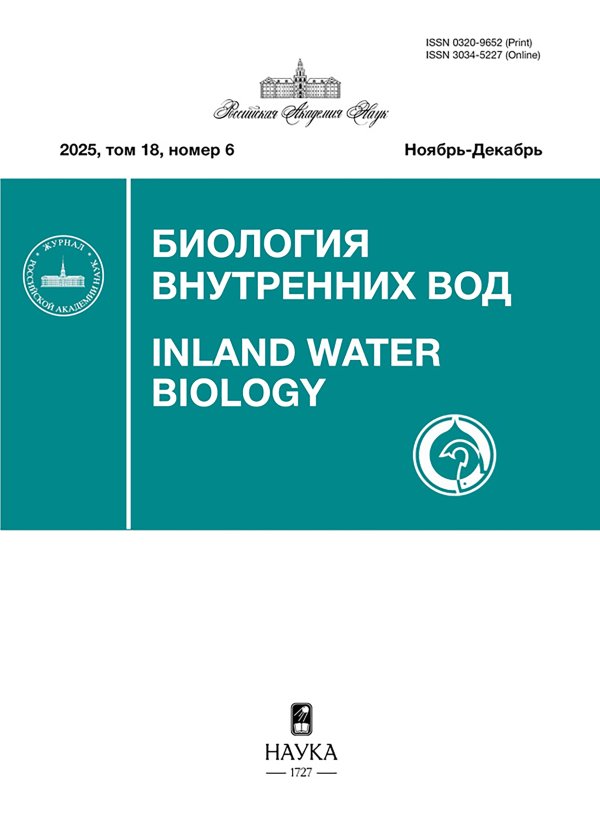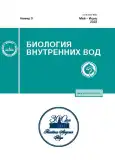Polychlorinated Biphenyls in the Bream Abramis brama from the Volga Ples the Rybinsk Reservoir: Fish Age Effect and Human Health Risk Assessment
- Authors: German А.V.1, Mamontov А.А.2, Mamontova E.A.2
-
Affiliations:
- Papanin Institute for Biology of Inland Waters, Russian Academy of Sciences
- Vinogradov Institute of Geochemistry, Siberian Branch, Russian Academy of Sciences
- Issue: No 3 (2023)
- Pages: 405-406
- Section: ВОДНАЯ ТОКСИКОЛОГИЯ
- URL: https://journals.rcsi.science/0320-9652/article/view/134940
- DOI: https://doi.org/10.31857/S0320965223030099
- EDN: https://elibrary.ru/PMATDN
- ID: 134940
Cite item
Full Text
Abstract
Bream, Abramis brama (L.), is an important commercial species and the object of monitoring pollution of freshwater bodies with polychlorinated biphenyls (PCBs). However, the dependence of the PCB content on the age of the bream has been studied very poorly. In this regard, the concentrations of 32 PCB congeners were measured in the carcasses of female bream of different ages in the pre-spawning period. It is shown that the concentration of PCBs in the body lipids increases from 257 to 449 ng/g over a period of 8 to 19 years. In terms of wet weight, the concentration of PCBs increases from 19.8 to 57.9 ng/g over a period of 8 to 13 years and then decreases to 21 ng/g at the age of 19 years. The largest share was 5-XB – from 46 to 58%, then 6-XB – from 17 to 29%, 4-XB – from 12 to 18%, 3-XB – from 4 to 8%, 7-XB – from 4 to 6% and 2-XB – from 0.1 up to 0.5%. PCB concentrations 5/8, 28, 31, 44, 49, 52, 74, 70/76, 87/115, 95/66 do not depend on age (R2 < 0.5); PCBs 97, 99, 105, 90/101, 110, 118. They have an average dependence (0.5 < R2 < 0.6); PCBs 138, 153, 180, 183, 128/167 and 170/190 strongly depend (R2 ≥ 0.7). With age, the congener composition changes towards an increase in highly chlorinated PCBs. The content of PCBs in the carcass of bream of the Volga Ples of the Rybinsk reservoir does not exceed the existing in Russia MPC in fish, amounting to 2 mg/kg of raw weight. The average indicator of non–carcinogenic risk exceeds 1 (0.82–2.39), which indicates the possible development of non-carcinogenic diseases in target organs and systems. The indicator of carcinogenic risk exceeds the level of negligible risk (1 × 10–6) and corresponds to the range 2 – the maximum permissible risk or the upper limit of acceptable risk (1 × 10–6–1 × 10–4). These risks are subject to constant monitoring, the population is recommended to limit the consumption of large fish with a high fat content.
About the authors
А. V. German
Papanin Institute for Biology of Inland Waters, Russian Academy of Sciences
Author for correspondence.
Email: gera@ibiw.ru
Russia, Nekouzskii raion, Yaroslavl oblast, Borok
А. А. Mamontov
Vinogradov Institute of Geochemistry, Siberian Branch, Russian Academy of Sciences
Email: gera@ibiw.ru
Russia, Irkutsk
E. A. Mamontova
Vinogradov Institute of Geochemistry, Siberian Branch, Russian Academy of Sciences
Email: gera@ibiw.ru
Russia, Irkutsk
References
Supplementary files










